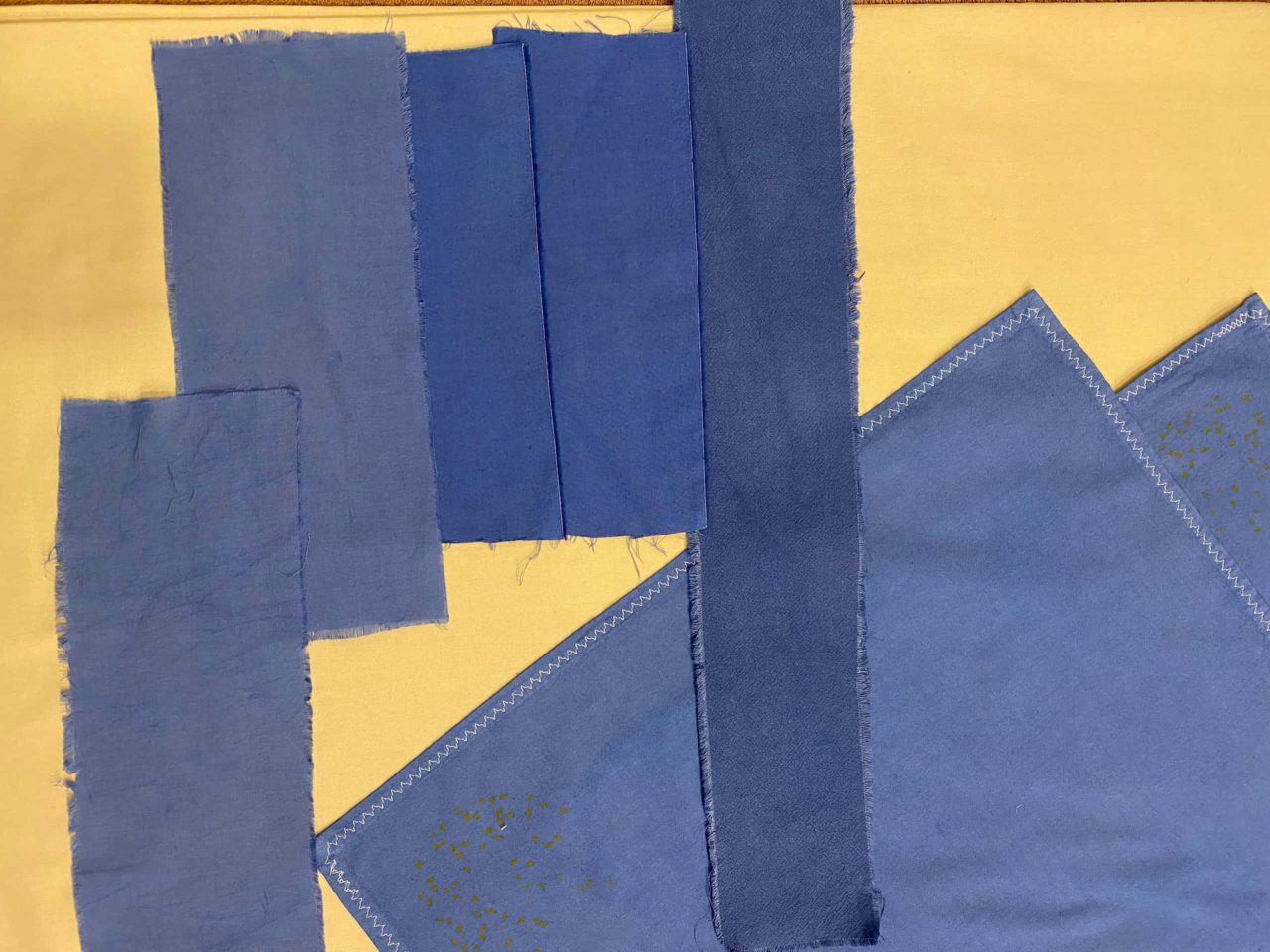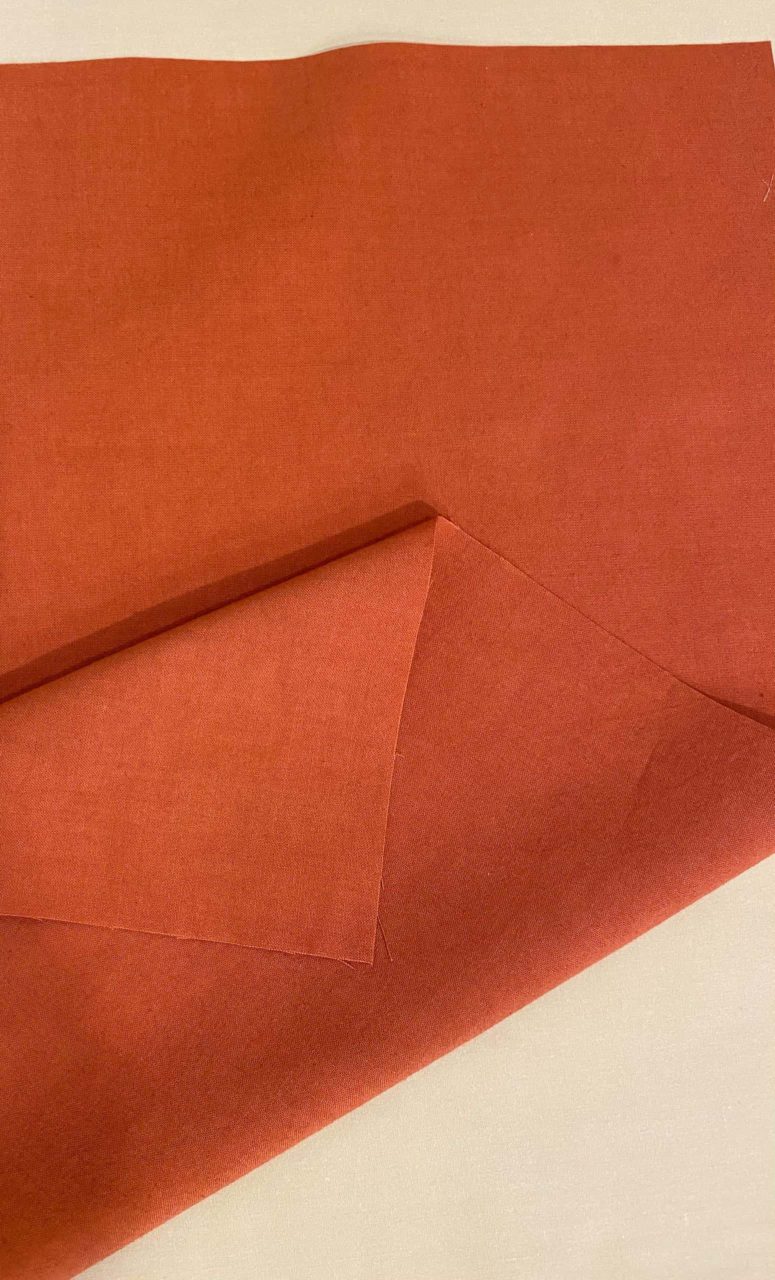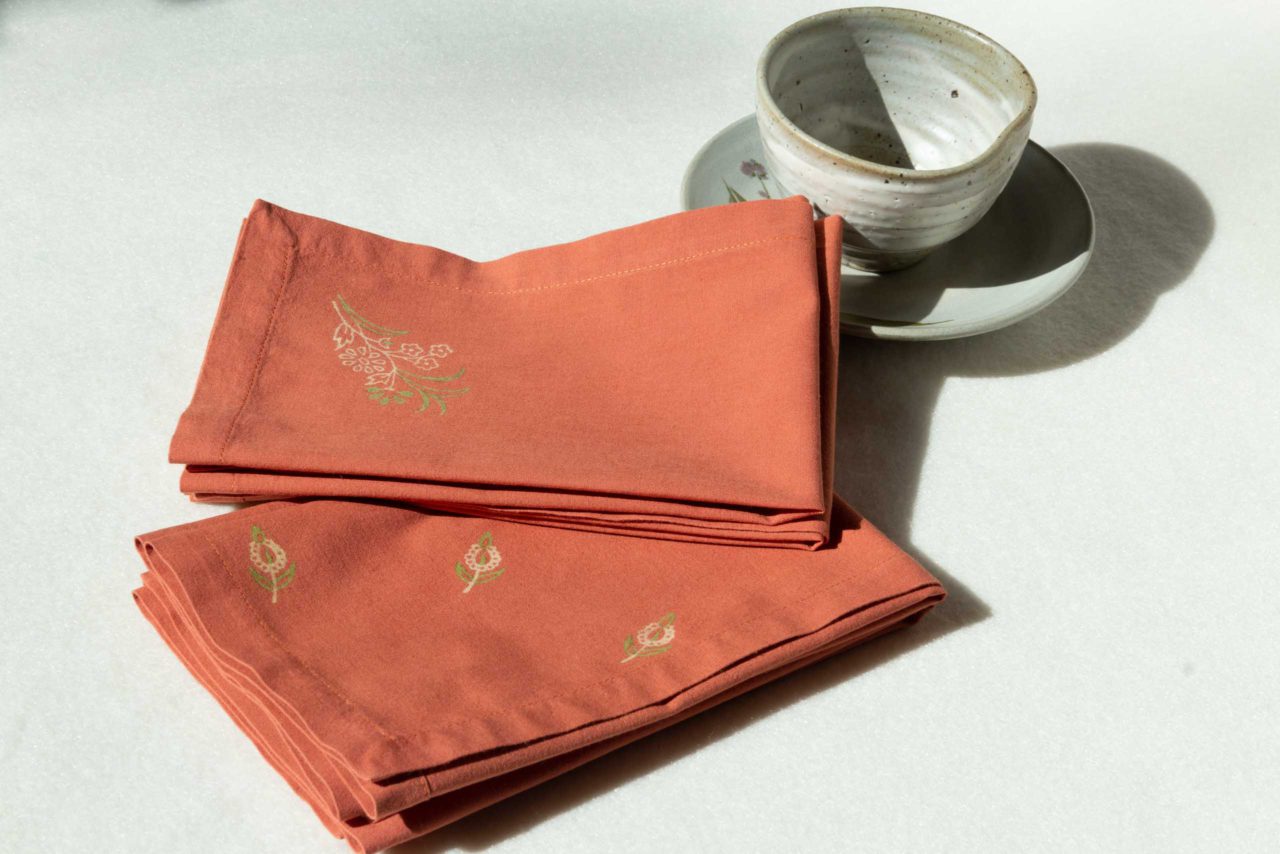In September 2020, I came across an article in CNN about pollution and toxicity associated with industrial textile dyeing. Here is another article about dyeing and water pollution and the new ventures into water-less dyeing. It was shocking to read the environmental pollution caused by the effluents from the dyeing factories being emptied into water bodies, and its deleterious effects on people’ health and vegetation. I have bought vividly colored textile from shops without knowing the conditions under which those colors have been produced. Were they all manufactured in industries that have a murky environmental record? Were some of them alright? I have no way of telling. Instead of taking on the tough task of tracking down the provenance of textile-dyeing, I looked for alternative paths. I contacted my main source for fabric about their production process and they responded promptly with information about their organic and ethical farming practices. For instance, their organic cotton uses banana fibre for whitening. The other product I use from them is the organic, unbleached cotton which I use to make placemats. However, these two choices only come in off-white which is rather limiting if I want to offer a range of colors for customers to choose from.
R: Fabric of various thicknesses, before dyeing.

That prompted me to consider dyeing fabric myself. I looked into natural dyes but discovered that they are not often the safer and eco-friendly options that one might think they are. Some synthetic dyes on the other hand, like Procion MX, are non-toxic and can be safely poured down the drain at home without danger to the water table. So I took a breath and took the plunge! I tried it out on a few pieces of fabric, of varying thickness and the results were very satisfactory. It took about 4.5 hours for the whole process and my right arm got a great workout from all the stirring but it was great to see a nice, even color on all the pieces I dyed. There was a range of hues, with the thicker fabric having a deeper shade than the thinner ones. I then decided to try dyeing a piece that I had kept aside to make napkins. This time I tweaked the washing and rinsing steps so that I was absolutely sure that it was colorfast.
So this set of napkins (JJ’s Choice) is special for a couple of reasons. One, it is a successful attempt at solid-shade dyeing at home and two, it is one of my father’s favorite colors. He always had an item of clothing in this color. Because of the second reason, I was somewhat reluctant to offer this for sale as it reminds me strongly of my father and his wonderful taste in colors and design. Nevertheless, here they are, for someone to enjoy them in their home!

Given that my dyeing experiments have been successful so far, I would like to continue this practice and offer products made from hand-dyed fabric whenever I can. The ingredients used in my dyeing process are: Procion Mx dyes, common salt, soda ash, a pinch of water softener and water. Each ingredient in the quantities that I use is safe, as I only dye in small batches. So if the colored fabrics that you see on Kokuin are labeled as ‘hand-dyed’, that means it was dyed by me. I am very happy to offer this option to you! Now, will the colors last as long as the industrially-dyed ones? I will honestly tell you that I cannot say, since I have not tested them for 10+ years before offering them for sale. In the process of dyeing, I will make sure that all the excess dye will wash out before it is made into napkins or any other product. That, and the fact that my dyeing process is far less toxic than many industrial dyeing processes are the two factors going for my products. I am excited about this new direction for Kokuin, moving forward towards a more sustainable production process!



